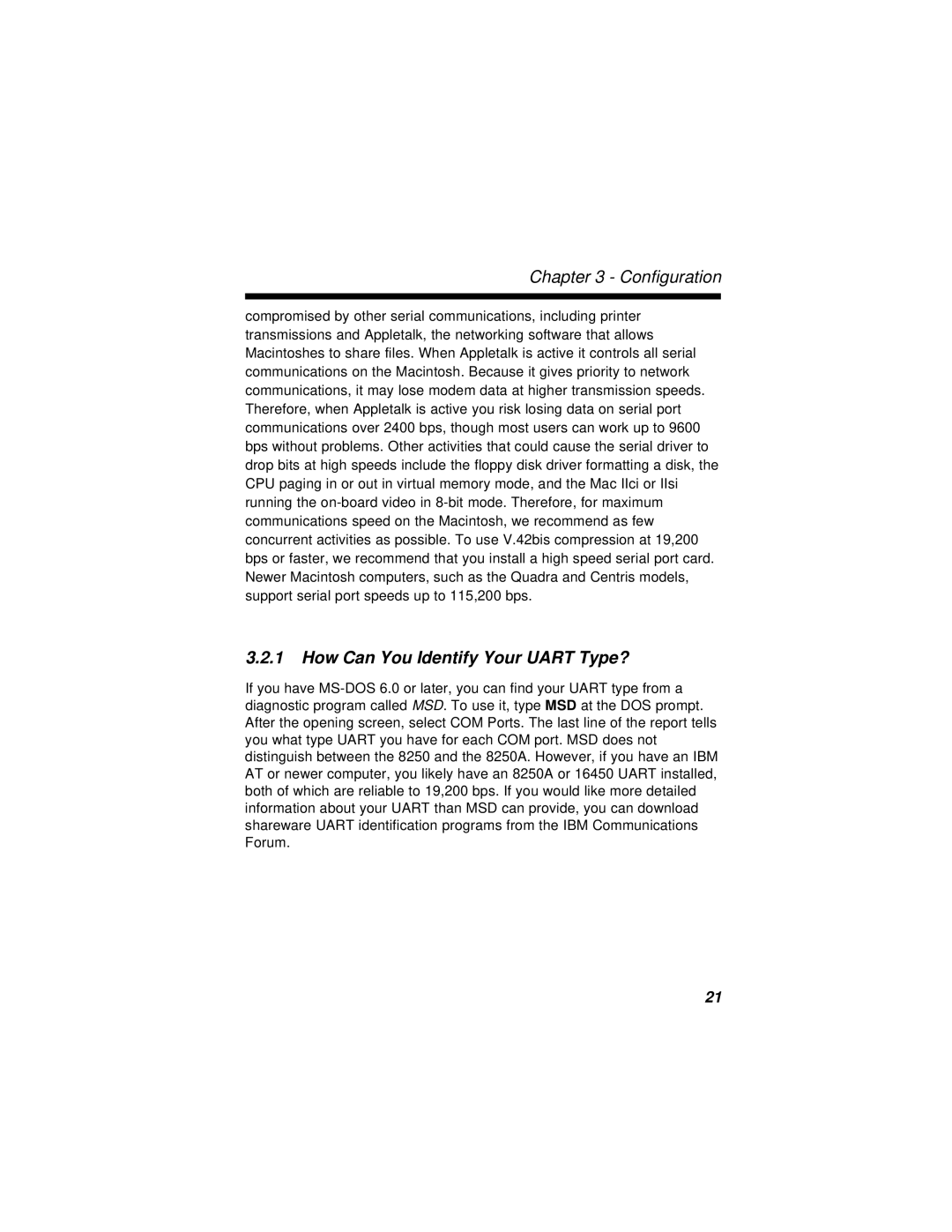
Chapter 3 - Configuration
compromised by other serial communications, including printer transmissions and Appletalk, the networking software that allows Macintoshes to share files. When Appletalk is active it controls all serial communications on the Macintosh. Because it gives priority to network communications, it may lose modem data at higher transmission speeds. Therefore, when Appletalk is active you risk losing data on serial port communications over 2400 bps, though most users can work up to 9600 bps without problems. Other activities that could cause the serial driver to drop bits at high speeds include the floppy disk driver formatting a disk, the CPU paging in or out in virtual memory mode, and the Mac IIci or IIsi running the on-board video in 8-bit mode. Therefore, for maximum communications speed on the Macintosh, we recommend as few concurrent activities as possible. To use V.42bis compression at 19,200 bps or faster, we recommend that you install a high speed serial port card. Newer Macintosh computers, such as the Quadra and Centris models, support serial port speeds up to 115,200 bps.
3.2.1How Can You Identify Your UART Type?
If you have MS-DOS 6.0 or later, you can find your UART type from a diagnostic program called MSD. To use it, type MSD at the DOS prompt. After the opening screen, select COM Ports. The last line of the report tells you what type UART you have for each COM port. MSD does not distinguish between the 8250 and the 8250A. However, if you have an IBM AT or newer computer, you likely have an 8250A or 16450 UART installed, both of which are reliable to 19,200 bps. If you would like more detailed information about your UART than MSD can provide, you can download shareware UART identification programs from the IBM Communications Forum.
